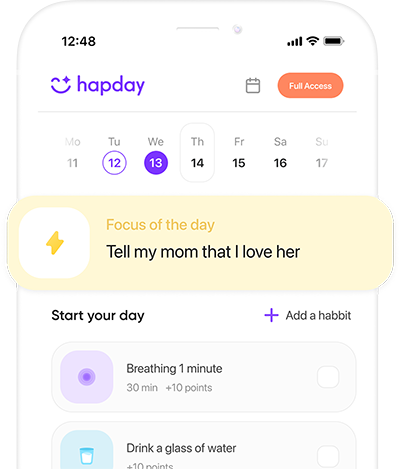Table of Contents
Recognizing the Signs of a Toxic Relationship
The starting point for breaking free is realizing you’re in a toxic relationship in the first place. These relationships are marked by behaviors that cause emotional—or sometimes physical—harm. Look out for red flags like constant criticism, manipulation, and a lack of support. Back in 2020, a study reported in the Journal of Social and Personal Relationships noted that people in such relationships often face high stress and have low self-esteem (Smith et al., 2020).
Emotional Abuse and Manipulation
A defining element of toxic relationships is emotional abuse. This can include gaslighting, where the other person makes you question your own reality, and manipulation, which seeks to control your actions and feelings. The National Domestic Violence Hotline indicates that emotional abuse features in almost half of all abusive relationships (NDVH, 2022).
Lack of Support and Respect
In a healthy relationship, partners are expected to support each other’s goals and respect differences. This is conspicuously missing in toxic relationships. Dr. John Gottman, a big name in relationship research, observed that contempt often precedes relationship breakdowns and is rife in toxic environments (Gottman, 1993).
Jealousy and Possessiveness
Everyone experiences jealousy at some point, right? But when it becomes excessive, it morphs into possessiveness, a toxic behavior that stifles freedom. Findings in Psychological Science indicate that jealousy can provoke aggressive behaviors, fueling relationship toxicity (Muise et al., 2014).
Understanding the Impact of Toxic Relationships
Before you can leave, it’s critical to grasp how deeply a toxic relationship affects your life. According to the American Psychological Association, such relationships can trigger depression, anxiety, and even physical ailments like heart disease (APA, 2017).
Mental Health Consequences
The toll on mental health is often substantial. A study published in Health Psychology discovered that individuals embedded in toxic relationships are more susceptible to developing depressive symptoms and anxiety disorders (Kiecolt-Glaser et al., 2015).
Physical Health Deterioration
Stress rooted in a toxic relationship doesn’t just vanish—it often manifests physically. Chronic stress has links to a weakened immune system, increased blood pressure, and other heart issues. In 2018, the Centers for Disease Control and Prevention noted that health problems tied to stress often originate in toxic interpersonal relationships (CDC, 2018).
Social Isolation
Abusers frequently isolate their victims from supportive friends and family. This intensifies feelings of helplessness and dependency, turning the relationship into a trap. Social isolation is a common tactic for retaining control, according to the Domestic Abuse Intervention Programs (DAIP, 2020).
Preparing to Leave a Toxic Relationship
Once you’ve understood the relationship’s toxic nature and its impact, preparation becomes crucial. This phase involves planning meticulously, building a network of support, and prioritizing your safety.
Building a Support Network
A solid support network is invaluable—don’t underestimate it. Family, friends, and groups can offer emotional and practical backing. A study in Psychological Science underscores the role of such support in managing relationship stress (Cohen & Wills, 1985). Why not reach out to local groups—or even online communities—who understand your plight?
Financial Independence and Planning
Finances often hold people back in toxic scenarios. Start by claiming your financial independence. Open separate bank accounts, seek employment, and maybe even some financial advice. Family Relations research highlights financial independence as a key factor for those aiming to leave abusive relationships (Anderson & Saunders, 2003).
Safety Planning
Safety can’t be compromised, particularly in abusive scenarios. Develop a sound safety plan, including key contacts, emergency funds, and a place to go if things escalate. The National Coalition Against Domestic Violence stresses keeping crucial documents and an emergency bag ready for sudden departures (NCADV, 2019).
The Process of Leaving a Toxic Relationship
Leaving isn’t straightforward. It involves making hard decisions, taking action, and dealing with the emotional fallout.
Making the Decision
Deciding to leave is monumental and often emotionally draining. Keep reminding yourself why this is in your best interest. As highlighted by the Women’s Aid Organization, recognizing the need for change is vital for overcoming indecision (WAO, 2021).
Taking Action
Once you’ve decided, the next step is action. Implement your safety measures, seek legal advice if needed, and arrange for your new living conditions. The Domestic Violence Legal Empowerment and Appeals Project can guide you in obtaining legal support (DV LEAP, 2018).
Coping with the Aftermath
The aftermath of leaving might come with mixed emotions—relief mixed with guilt. Therapy or counseling can be remarkably helpful. Cognitive-behavioral therapy, for instance, effectively aids individuals in processing emotions and building resilience after a toxic relationship (Beck, 2011). Maintaining your support network is key during this period.
Healing and Moving Forward
Leaving marks the beginning of a new chapter—a long yet rewarding healing journey of rebuilding self-esteem, setting boundaries, and rediscovering joy.
Rebuilding Self-Esteem
Toxic relationships often corrode self-esteem. Engage in activities that bolster your sense of worth. Small goals and self-affirmations can significantly lift confidence. Research in Self and Identity supports the effectiveness of self-affirmation exercises in enhancing self-esteem (Sherman & Cohen, 2006).
Establishing Healthy Boundaries
Boundaries prevent future toxic scenarios. Learn to say no; put yourself first. According to a study in the Journal of Marital and Family Therapy, boundaries are crucial to healthy relationships (Knudson-Martin et al., 2014).
Seeking Joy and New Experiences
Joy cannot be understated in healing. Engage with hobbies, meet new people, and explore interests that the relationship may have stifled. Research in Psychological Science proves that partaking in enjoyable activities boosts overall happiness and satisfaction (Lyubomirsky et al., 2005).
Professional Help and Resources
Professional guidance can’t be overlooked; it offers substantial support as you navigate leaving a toxic relationship.
Therapy and Counseling
Therapy grants a space to delve into your experiences. Cognitive-behavioral therapy, especially, helps in restructuring negative thoughts and developing coping techniques. The Journal of Consulting and Clinical Psychology discusses therapy’s role in bettering mental health post-relationship (Hoffman et al., 2012).
Support Organizations
Many organizations are on standby to help those escaping toxic relationships. The National Domestic Violence Hotline, for instance, offers a wealth of resources, including a 24/7 helpline. Also, local shelters and community services provide temporary housing and support.
Online Resources and Communities
Don’t underestimate the power of online communities; they offer belonging and support from people who’ve walked in your shoes. Platforms like Reddit and specialized forums cater to those sharing similar experiences. Evidence from Cyberpsychology, Behavior, and Social Networking shows that online support communities significantly enhance emotional well-being (Baker & Moore, 2011).
Embracing a Positive Future
Breaking free from a toxic relationship paves the way for a brighter, more fulfilling future. By deciphering toxicity, preparing cautiously, and seeking help, you can reclaim your life. Remember, healing is personal, and each step is a testament to your courage.
Moving Towards Healthy Relationships
Future relationships should prioritize mutual trust, respect, and support. Research in The Journal of Positive Psychology concluded that individuals in healthy relationships generally boast higher happiness levels and life satisfaction (Diener & Seligman, 2002).
Practicing Self-Compassion
Throughout this


Breaking free from a toxic relationship is such an important journey! I remember when I finally recognized the signs and decided to leave. It was tough, but it was so worth it in the end. Surrounding myself with supportive friends helped immensely. If anyone is on this path, remember you’re not alone!
How did you find the strength to take that first step? I feel stuck right now.
It’s inspiring to hear your story! What advice would you give someone still in the thick of it?
Honestly, some people just don’t get how damaging toxic relationships can be until they experience it firsthand. It’s like being stuck in a loop of negativity! The emotional toll is so real, yet so many stay out of fear or confusion. We need to talk more openly about this.
Exactly! People often minimize emotional abuse because it’s not visible like physical abuse.
But isn’t every relationship hard at times? How do we know when it’s truly toxic?
This article hit home for me. I wish I had found this information sooner during my breakup process! Recognizing the signs was eye-opening for me, especially regarding manipulation and jealousy—it feels so isolating when you’re in it.
Do you think there are specific things one should look for earlier on in a relationship to spot these red flags?
It’s crazy how much stress these toxic relationships can cause! I never realized how bad my anxiety got until I left mine behind. Now I’m learning to prioritize my mental health—self-care is key! Anyone else feel liberated after breaking free?
Absolutely! It’s like a weight has been lifted off my shoulders—finding joy again feels amazing!
I found this article very helpful but also a bit overwhelming—there’s so much to consider before leaving a toxic relationship! It makes sense to plan carefully, but sometimes emotions just take over and make things harder.
I get that—it’s important to balance planning with listening to your instincts!
True that—emotionally charged decisions can lead us astray if we’re not careful.
Healing after leaving takes time, doesn’t it? I remember feeling guilty for wanting happiness again after such a draining relationship—but we all deserve joy and peace in our lives! Anyone else struggled with self-acceptance post-breakup?
Yes, definitely—I had moments of doubt but eventually learned that prioritizing myself was essential.
I never thought breaking up could be like doing an escape room challenge! Planning everything out made me feel like James Bond trying to sneak away from danger—a little dramatic but hey, whatever works right? Anyone else have funny thoughts during their breakup process?
This article is a beacon of hope for anyone trapped in a toxic relationship. It articulates the signs and the emotional toll so clearly, helping many to recognize their situation. The emphasis on self-esteem and support networks resonates deeply, providing practical steps towards healing. Bravo to the authors for shedding light on such an important topic.
While I appreciate the effort behind this article, it feels overly simplistic to assume everyone can just ‘leave’ a toxic relationship easily. What about economic factors or children involved? It’s great to have these resources, but real-life situations are much messier than this guide suggests.
This post does a commendable job of summarizing research on toxic relationships. The references to various studies enhance its credibility significantly. However, I would have liked more emphasis on the long-term psychological effects rather than just focusing on immediate steps for leaving. Insight into recovery processes could be beneficial as well.
‘Toxic relationships’—the term is thrown around too casually nowadays. Are we really considering all relationships that face challenges as toxic? Maybe some people need to work through their issues rather than throw in the towel at the first sign of trouble. Not every disagreement means it’s time to leave.
‘Possessiveness stifles freedom’? If my partner isn’t possessive, how do I know they care? Just kidding! This article is a serious topic wrapped in relatable advice—great balance! Next time I feel jealous, I’ll remember it’s not love but a toxic trait; guess I’ll have to practice my ‘no’ skills!